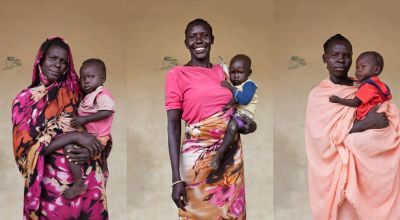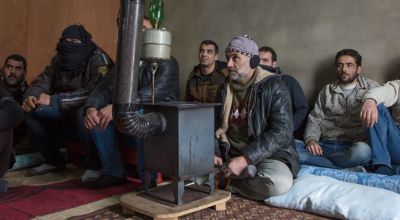
Read our 2023 annual report

Knowledge Hub
Conflict affects everyone, but it’s no equaliser. It hits women and girls especially hard in ways that often reinforce gender inequalities within a community.
Even if women aren’t on the frontlines, they aren’t safe. Gender-based violence rates go up in conflict zones. According to the UN, the maternal mortality rate in conflict and post-conflict countries rises to 2.5 times higher than the average. It’s a complex situation no matter the circumstances. Here are six things you need to know about women and conflict, as well as what Concern is doing to help.
1. Women play key roles in conflict that are often different from men…
…and those roles can change depending on the roles that women play during peacetime in any given society. As conflict has grown more localised since the 20th century, the way that women participate in conflicts is also more tied to local gender norms and traditional roles. A 2007 USAID report groups women’s roles in conflict into five main categories:
- Active participants and combatants
- Providers of support for participants (either forced or voluntary)
- Victims and “spoils” of war
- Newly-responsible care providers
- Agents of change
Even these aren’t uniform experiences, however, and the effects these roles have on women can last long after the conflict is over.
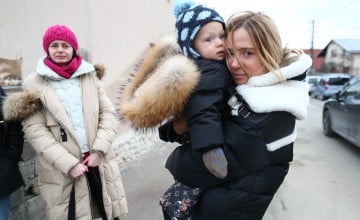
2. Gender-based violence is a weapon of war
“We are still far away from being able to draw a red line against the use of sexual violence in war and conflict,” says doctor and Nobel Peace Prize Laureate Denis Mukwege. Dr. Mukwege was speaking specifically about GBV in his home country, the Democratic Republic of Congo, but this is a near-universal experience. Even the USAID categories listed above factor for this.
In the Central African Republic, despite policies and legislation designed to protect them, women and girls have faced increased amounts of gender-based violence and sexual assault throughout a 12-year-conflict. As violence in one area increases, more vulnerable people (including women, girls, the elderly, and disabled) are more likely to be left behind. In Kouango, a town in southern CAR of approximately 8,000 people, Bernadette*, a mother of two with a pre-existing disability, was among those who were unable to flee. “I had to hide my daughter under the bed,” she recalls of an attack on her village. “They committed abuses and raped girls.”
Women and girls who are able to take refuge in a host community, either in their own country or abroad, are also not free from gendered violence. Many report that women are exposed to sexual exploitation and abuse at the hands of host communities. One woman in Kpangba I, a village near Kouango in the Central African Republic that was a host for many in the region, explains that “food was sometimes exchanged for sex… Host populations want to have sex with women before they are hired.”
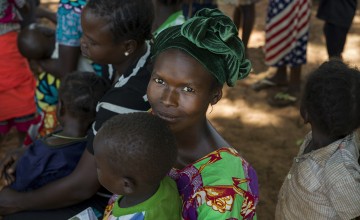
3. Gender-based violence may just as likely happen at home for families displaced by conflict
Violence against women and girls can also occur within their family, even if this was never a problem in peacetime. “I remember him as so nice before, so affectionate,” Khadija*, a Syrian refugee tells us from her temporary home in Lebanon. “I know life has been hard, and he’s under a lot of pressure. But this became too much.”
This is a common refrain for women who live through war and conflict with their husbands or partners. Khadija’s husband, Ibrahim*, began to beat his wife as a negative reaction to the profound stress and trauma of their displacement.
“The war changed our life from — I don’t want to say heaven, but it definitely became hell,” Ibrahim says of the change. “We used to argue, my wife and I, but we could make things work. After we left Syria, it wasn’t working any more.” This is an all-too-common pattern for men and women living with the uncertainty of displacement, especially those coming from cultures like Syria, where traditional manhood is associated with being able to provide for and protect one’s family. Men are just as much a victim of circumstance in this equation.
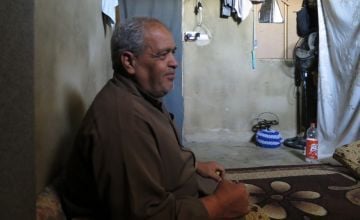
4. Women and conflict is an intersectional issue
Some women are forced into displacement camps or host communities due to compound or intersectional vulnerabilities. At 19, Nyabila* had to flee her home in South Sudan due to increased violence in the area. “I had no option,” she explains. “I had to leave.”
She stayed with a relative in a protection of civilians (POC) camp for some time. She was forced to leave when she became pregnant out of wedlock, owing to traditional gender and sexual values around marriage and having children. She lives in a makeshift tent with her daughter, Athieu*, who was two years old when we first met. “When she is playing, I laugh. We have fun together, we laugh together,” Nyabila says as Athieu flashes a winning smile. However, the lack of support means that the young mother is on her own when it comes to learning how to be a parent in the middle of a decade-long conflict. “I don’t have hope for the future,” Nyabila adds.
All of this happening during a conflict can make the situation more dire, especially for Athieu, who has been in and out of Concern’s nutrition programme in South Sudan, receiving treatment for severe acute malnutrition. Supplies and support are more limited, and women who are further marginalised due to circumstances beyond their control are often left furthest behind.
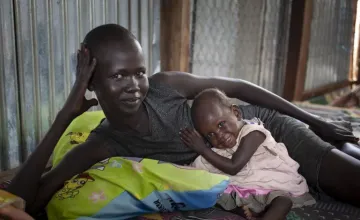
5. Challenges persist for women who return
Social roles and statuses follow women through displacement into their return. Women who survive violence associated with war may also face particular stigma, as they are often seen as responsible for the violence they experience.
“A lethal combination of impunity for perpetrators and deep-rooted inequality and discrimination means that gender-based violence, including sexual violence against women and girls, is not taken seriously as a crime, nor is its devastating impact addressed,” Caroline Atim, director of the South Sudan Women with Disabilities Network, told the UN Security Council in 2021.
Gender equality is a challenge in South Sudan, where even before the current conflict violence against women and girls was considered socially acceptable. This means that ending the epidemic of GBV that accompanies conflict in the country means first shifting mindsets and undoing centuries of harmful traditions so that South Sudanese people can first agree that perpetrators must be held to account.
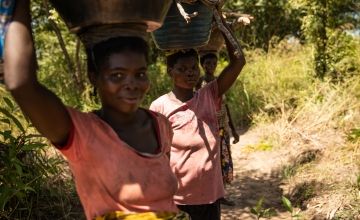
6. Gender equality is the key to lasting peace
A 2015 UN Women report provides several links between gender equality and conflict, concluding that “women’s participation is key to sustainable peace.” When women are witnesses, signatories, mediators, and/or negotiators in a peace process, the agreement is 20% more likely to last at least two years. Even better, this likelihood increases over time: Peace treaties that include women in the process in a meaningful way are 35% more likely to last 15 years.
Women and conflict: Concern’s response
Concern knows that because war affects women and children disproportionately, we have to focus on their needs. In countries that are hosting large numbers of refugees — such as Lebanon and Türkiye — we provide refugee women with psychosocial support, address shelter needs, and build resources for communities to promote gender equality and reduce gender-based violence.
In countries in conflict, like South Sudan, we are distributing food and vouchers to families, treating malnourished children, building shelters, and providing clean water and latrines. We remain committed to working with women — especially single parents — to provide them with skills training so that they’re able to work toward a better life for themselves and their families.



